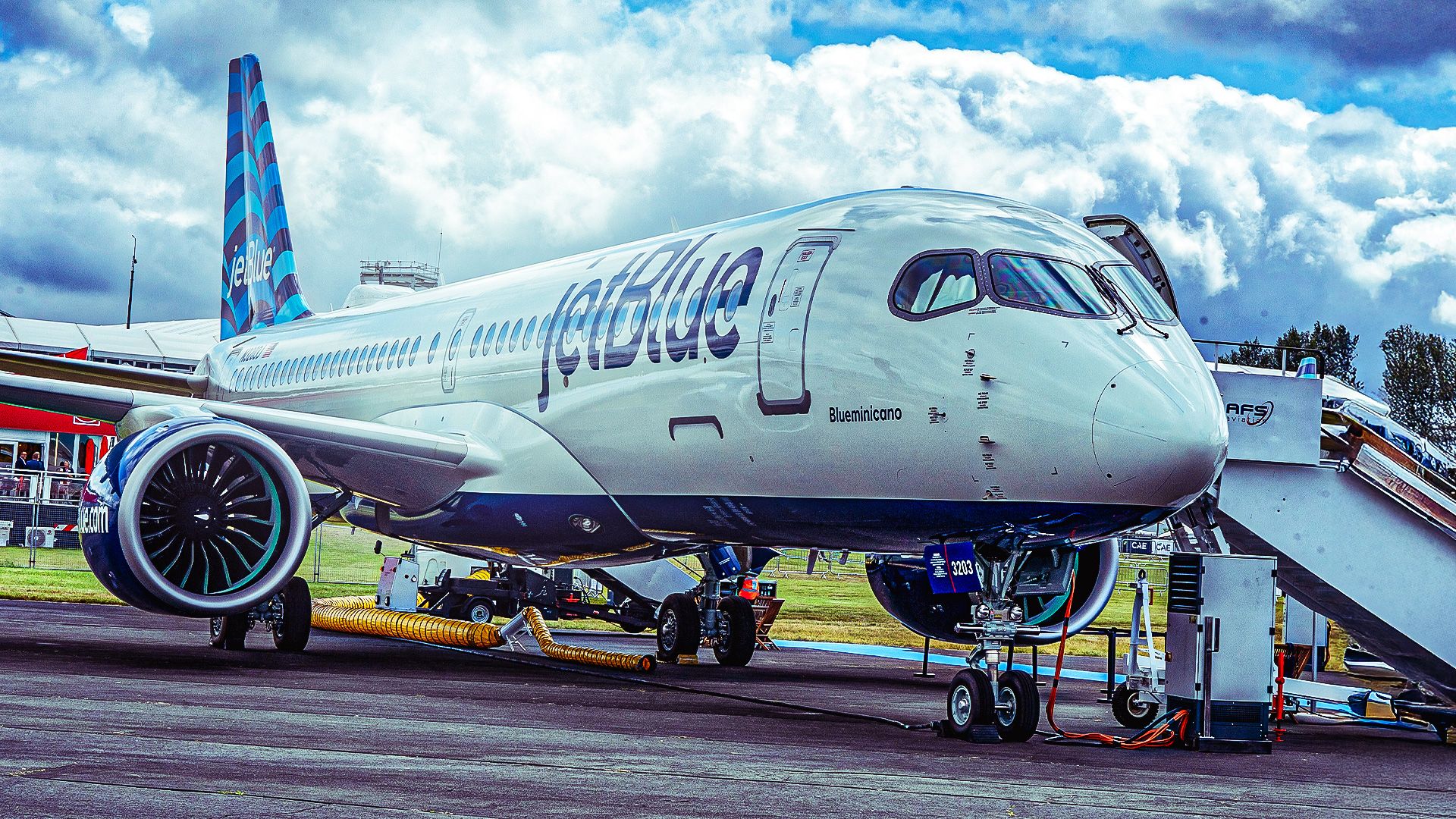World
JetBlue Chooses A220-300 Over A220-100 for Fleet Expansion

JetBlue Airways has committed to the Airbus A220-300, opting not to include the smaller A220-100 in its fleet expansion strategy. This decision comes as the airline seeks to modernize its operations and improve efficiency. The A220-300, which seats 120 to 150 passengers, offers significant advantages over the A220-100, which accommodates about 100 to 120 passengers.
The A220 series has evolved from its initial introduction by Bombardier as the CSeries in the early 2010s, facing numerous challenges, including tariffs imposed by the United States in 2017. Following Airbus’s acquisition of a majority stake in the program, the aircraft was rebranded and has since gained traction with various airlines globally. JetBlue has ordered 100 A220-300 aircraft, with 52 already delivered as of September 2025.
Transition from the E190 to the A220-300
JetBlue’s move to the A220-300 is primarily driven by the need to replace its aging Embraer E190 fleet, which had been in service since November 2005. The E190 allowed JetBlue to enter smaller markets, providing essential service routes, including those to Austin and Richmond. However, rising operational costs prompted the airline to retire the E190, with the last flight occurring in September 2025.
When evaluating potential replacements, JetBlue considered the Embraer E195-E2 alongside the A220 series. Although the E195-E2 is recognized for its fuel efficiency and can carry 120 to 146 passengers, JetBlue ultimately favored the A220-300 for its greater capacity and operational flexibility. The airline pointed out that the A220-300 provides a range of 3,400 nautical miles, slightly less than the A220-100’s maximum range of 3,450 nautical miles, but with a more efficient fuel burn per seat-mile.
Strategic Benefits of the A220-300
One of the key reasons JetBlue opted for the A220-300 is the potential for improved network flexibility and financial benefits. A company statement highlighted that the larger model would enhance JetBlue’s operational strategy, allowing for more efficient service on routes that demand higher capacity. According to Aircraft Commerce, the A220-300 is expected to reduce JetBlue’s operating costs by 30% per seat and lower fuel costs by 40% per seat compared to the E190.
JetBlue is primarily deploying the A220-300 on short-haul routes along the East Coast, particularly between New York’s John F. Kennedy Airport (JFK) and Boston Logan International Airport. The airline’s strategy reflects a focus on high-frequency travel within this corridor, with routes like Boston to Washington National and Boston to New York-JFK ranking among the most operated flights.
As JetBlue continues to receive its A220-300 orders, the airline is also exploring the introduction of a new domestic first-class product on this aircraft type. This move aims to attract more business travelers and tap into the lucrative transcontinental market, which has been a significant revenue driver for other airlines.
JetBlue’s commitment to the A220-300 underscores its strategy of balancing cost efficiency with passenger experience, aligning with its brand identity as a hybrid carrier dedicated to providing a premium service at competitive prices. As the airline adapts its network around this new aircraft, the future looks promising for JetBlue in terms of operational capabilities and market reach.
-

 Politics1 week ago
Politics1 week agoSecwepemc First Nation Seeks Aboriginal Title Over Kamloops Area
-

 World4 months ago
World4 months agoScientists Unearth Ancient Antarctic Ice to Unlock Climate Secrets
-

 Entertainment4 months ago
Entertainment4 months agoTrump and McCormick to Announce $70 Billion Energy Investments
-

 Lifestyle4 months ago
Lifestyle4 months agoTransLink Launches Food Truck Program to Boost Revenue in Vancouver
-

 Science4 months ago
Science4 months agoFour Astronauts Return to Earth After International Space Station Mission
-

 Technology3 months ago
Technology3 months agoApple Notes Enhances Functionality with Markdown Support in macOS 26
-

 Top Stories1 month ago
Top Stories1 month agoUrgent Update: Fatal Crash on Highway 99 Claims Life of Pitt Meadows Man
-

 Sports4 months ago
Sports4 months agoSearch Underway for Missing Hunter Amid Hokkaido Bear Emergency
-

 Politics3 months ago
Politics3 months agoUkrainian Tennis Star Elina Svitolina Faces Death Threats Online
-

 Politics4 months ago
Politics4 months agoCarney Engages First Nations Leaders at Development Law Summit
-

 Technology4 months ago
Technology4 months agoFrosthaven Launches Early Access on July 31, 2025
-

 Top Stories3 weeks ago
Top Stories3 weeks agoFamily Remembers Beverley Rowbotham 25 Years After Murder





















